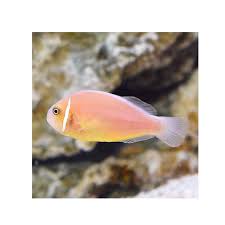Fresh tea has long been cherished in Chinese cuisine for its aromatic depth, health benefits, and versatility. While it is commonly consumed as a beverage, its use in cooking—especially in grilled and stewed dishes—offers a unique flavor profile that enhances the taste of meats, seafood, and vegetables.

Grilling brings out the smoky, caramelized flavors of food, while stewing develops deep, rich, and complex tastes through slow cooking. The infusion of fresh tea into these techniques introduces subtle floral, earthy, or smoky notes, making dishes more aromatic and flavorful.
In this article, we will explore:
✅ How fresh tea enhances grilled and stewed dishes.
✅ The best tea varieties for each cooking style.
✅ Techniques for using tea in marinades, sauces, and cooking liquids.
✅ Traditional and modern recipes for tea-infused grilling and stewing.
1. Why Use Fresh Tea in Grilled and Stewed Dishes?
Tea contains polyphenols, catechins, and flavonoids, which add depth and complexity to both grilled and stewed dishes. Here’s why tea is a fantastic addition to these cooking methods:
Benefits of Using Fresh Tea in Grilled Dishes:
✔ Tenderizes meat naturally – The tannins in tea help break down muscle fibers.
✔ Enhances smoky flavors – Especially with black and oolong teas, which have roasted notes.
✔ Adds subtle bitterness – Balances fatty meats like pork belly and lamb chops.
✔ Provides antioxidants – Helps neutralize the formation of harmful compounds during grilling.
Benefits of Using Fresh Tea in Stews:
✔ Deepens umami flavors – Particularly with fermented teas like Pu-erh, which complement rich broths.
✔ Improves digestion – Green and oolong tea help break down heavy, slow-cooked dishes.
✔ Reduces the need for excessive seasoning – Tea adds complexity without extra salt or sugar.
✔ Gives a clean, refreshing finish – Prevents stews from tasting too greasy.
2. Choosing the Right Fresh Tea for Grilling and Stewing
Each type of tea has distinctive flavors that work best with certain ingredients and cooking styles.
🌿 Best Teas for Grilled Dishes
| Tea Type | Flavor Profile | Best for |
|---|---|---|
| Green Tea (绿茶 – Lǜ Chá) | Light, grassy, slightly astringent | Chicken, seafood, grilled vegetables |
| Oolong Tea (乌龙茶 – Wū Lóng Chá) | Floral, creamy, slightly roasted | Pork, duck, mushrooms |
| Black Tea (红茶 – Hóng Chá) | Malty, bold, smoky | Beef, lamb, game meat |
| Pu-erh Tea (普洱茶 – Pǔ’ěr Chá) | Earthy, aged, slightly sweet | BBQ ribs, short ribs, brisket |
🍵 Best Teas for Stewed Dishes
| Tea Type | Flavor Profile | Best for |
|---|---|---|
| Green Tea | Refreshing, vegetal | Light broths, seafood soups |
| Oolong Tea | Smooth, slightly nutty | Chicken stews, tofu dishes |
| Black Tea | Robust, smoky, slightly sweet | Beef stews, braised pork |
| Pu-erh Tea | Rich, fermented, umami | Slow-cooked meat, mushroom-based stews |
3. How to Use Fresh Tea in Grilled and Stewed Dishes
☕ Grilling: Tea in Marinades, Rubs, and Smoke Infusion
1️⃣ Tea-Based Marinades:
- Brew strong tea and use it as a base for marinades.
- Combine with soy sauce, garlic, honey, and spices.
- Ideal for chicken, pork, and fish.
2️⃣ Tea-Infused Dry Rubs:
- Grind tea leaves into a fine powder.
- Mix with salt, pepper, and dry herbs.
- Works well for steak, ribs, and lamb chops.
3️⃣ Smoking with Tea Leaves:
- Mix tea leaves with wood chips for a tea-smoked flavor.
- Works best with duck, beef, and tofu.
🍲 Stewing: Tea as a Cooking Liquid
1️⃣ Replacing Water with Tea:
- Use freshly brewed tea instead of water or broth for a richer taste.
- Ideal for beef stews, braised pork, and mushroom-based soups.
2️⃣ Layering Flavors:
- Brew a strong tea concentrate and add it at different stages.
- Example: Use Pu-erh at the beginning for depth, then Oolong near the end for aroma.
4. Traditional and Modern Recipes
🍢 Tea-Infused Grilled Chicken (绿茶腌烤鸡 – Lǜ Chá Yān Kǎo Jī)
A refreshing, tender grilled chicken recipe using green tea.
Ingredients:
- 2 chicken breasts
- 1 cup strong brewed green tea
- 2 tbsp soy sauce
- 1 tbsp honey
- 1 garlic clove, minced
- ½ tsp black pepper
Instructions:
- Brew green tea and let it cool.
- Mix with soy sauce, honey, garlic, and pepper.
- Marinate chicken for at least 2 hours.
- Grill over medium heat for 5 minutes per side.
🍖 Pu-erh Tea Braised Pork Belly (普洱茶红烧肉 – Pǔ’ěr Chá Hóng Shāo Ròu)
A rich and deeply flavored Chinese-style pork belly stew.
Ingredients:
- 500g pork belly, cubed
- 2 cups strong brewed Pu-erh tea
- 2 tbsp soy sauce
- 1 tbsp Shaoxing wine
- 1 tsp sugar
- 1 star anise
Instructions:
- Sear pork belly until golden brown.
- Add Pu-erh tea, soy sauce, and spices.
- Simmer for 1.5 hours until tender.
🍢 Black Tea-Smoked Duck (红茶熏鸭 – Hóng Chá Xūn Yā)
This dish infuses the smoky aroma of black tea into the duck.
Ingredients:
- 1 whole duck
- 1 cup black tea leaves
- 1 tbsp salt
- 1 tbsp five-spice powder
Instructions:
- Rub duck with salt and spices.
- Place black tea leaves in a smoker or wok.
- Smoke duck for 20 minutes, then roast for 40 minutes.
5. Final Thoughts: The Art of Tea-Infused Cooking
Cooking with fresh tea in grilled and stewed dishes unlocks a new dimension of flavors while adding health benefits and depth to traditional recipes. Whether you’re looking to enhance smoky BBQ meats with black tea, or create a light, fragrant broth with green tea, the possibilities are endless.
By experimenting with different tea types and infusion techniques, you can discover unique flavor pairings that elevate your home cooking to gourmet levels. Try adding tea to your next grilling or stewing adventure and experience the magic of this ancient Chinese culinary secret! 🍵🔥

Leave a Reply